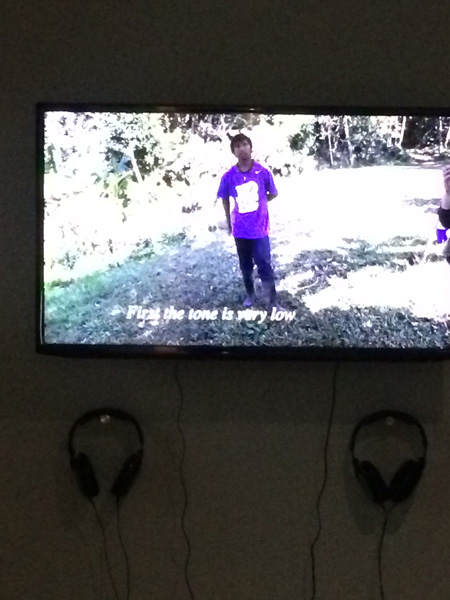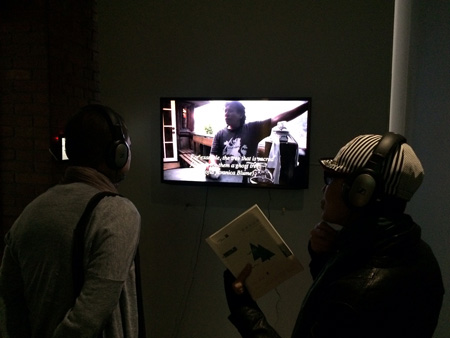MoCA Taipei
Photinia Formosana (vidéo, 10', password photina)
Contes d’arbres et de plantes (documentaire, 28’, lien en français ; lien en anglais, password taiwan)
Le projet Post ecolonialism débute en tant qu’éco-action et graduellement se transforme en action culturelle. Le projet cherche à atteindre un “bricolage” ou une “réparation” de la nature détruite, par la plantation d’arbres en re- contemplant notre relation à la Nature à travers le processus de “bricolage” quand nous “rendons la terre aux arbres”. Le grand nombre d’arbres natifs replantés tente également de reconstruire le paysage détruit par les hommes.
Le projet voit l’acte de plantation d’arbres comme une métaphore à travers lequel nous pourrions re-voir le genre de la peinture de paysage. L’esprit central de la relation entre sujet et Nature. En plus des documents décrivant les plantations, l’exposition réunit certains aspects de la peinture de paysages (taiwanais) et tente de créer une généalogie à travers des créations contemporaines.
Cette exposition explore et contemple les paysages taiwanais à travers cinq parties:
Dans la première partie, l’équipe curatoriale à voyager dans différentes parties des montagnes Xue Mountain Range, Central Mountain Range, et Ali Mountain Range pour filmer 3 cascades et créer une video verticale. Cette video symbolize la manière don’t les taiwanais voient la Nature depuis l’époque de la dynastie Qing. La seconde partie introduit les jardins botaniques japonais établis pendant la période d’occupation et reproduits en carte postale. Dans cette partie, on explorera comment la nature était perçue en un temps de décontextualisation quand la modernité a été introduite à Taiwan en meme temps que la peinture de paysage.
Dans la troisième partie, les visiteurs pourront découvrir plusieurs de différentes types par plusieurs peintre contemporains. Cette partie révèle la disparité entre des peintres contemporains de paysage et ceux fait sous la période d’occupation.
La quatrième partie est la re création d’un morceau du film de Hou Has Hsien, montrant le paysage sous une forme différente et un different medium. La cinquième partie monre une installation qui décrit le paysage de la forêt de Taiwan. Une video de la plante endémique “Photinia” fait partie de cette installation. Ce Photinia taiwanais particulier a été planté dans un jardin en Normandie, en France, il y a plusieurs décennies. A travers sa représentation, cette partie de l’exposition reexamines la problématique de l'écolonialisme” dans le contexte de la globalization et répond à la pensée culturelle de recontextualisation dans une éco- action de “rendre les arbres à la Nature”.
Post Ecolonialism Project first starts as an eco-action, and gradually evolves into an "action culturelle." The project aims to perform "bricolage," or "repair" the destructed nature by planting trees while re-contemplatin on our relationship with nature during the process of "bricolage" as we "return the land to trees." The large number of newly planted endemic trees also reconstructed the landscape destructed by human beings. The project viewed the action of tree-planting as a metaphor, through which we could re-examine the genre of landscape painting. The core spirit of both center on the relationship between the subject and nature. In addition to displaying documentations of the tree-planting action, the exhibition also reviews a certain aspect of Taiwanese landscape (painting), and attempts to represent this genealogy through new artistic creations.
The exhibition explores and contemplates on Taiwanese landscape through five sections. For the first section, the curatorial team journeyed to different parts of the Xue Mountain Range, Central Mountain Range, and Ali Mountain Range to filmed three waterfalls and created a scroll-like video work afterwards. The video symbolizes the landscape painting that shows how Taiwanese people have viewed nature during the rule of Qing dynasty. The second section introduces botanic gardens established during the Japanese-ruled period and reproduced picture postcards, through which the section would explore how nature was perceived in a manner of "decontextualization" after modernity was introduced into Taiwan as well as the landscape painting of this period. In the third section, audience could see the landscape paintings of different types by various contemporary Taiwanese painters. The section reveals both the disparities between contemporary landscape paintings and those from the Japanese-ruled Taiwan, and the shift in the relationship between man and nature. On view in the fourth section is a remake of a segment from Hou Hsiao-Hsien's road film, demonstrating the landscape from another perspective and through a different medium. The fifth section displays an installation that embodies the landscape of Taiwanese forest. A video of the Taiwanese endemic plant, Taiwan Photinia, is placed in this landscape installation. This particular Taiwan Photinia has been transplanted in a garden in Normandy, France several decades ago. Through its representation, the section reexamines the problematic of "ecolonialism" in the context of globalization and responds to the cultural thinking of recontextualization in this eco action of "returning the land to trees."
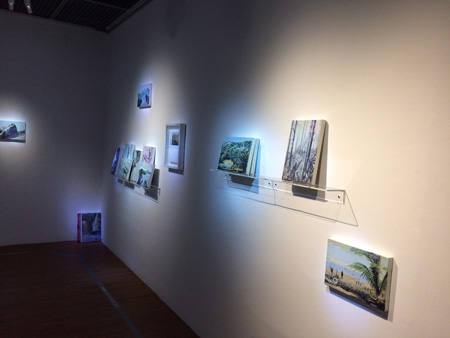
Vues generales de l’exposition
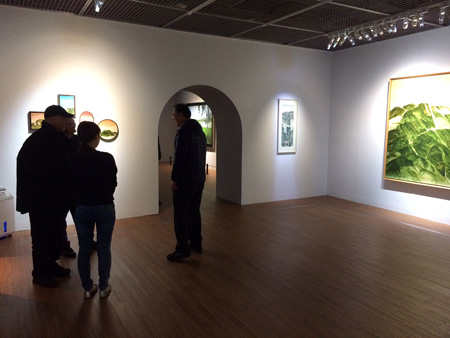
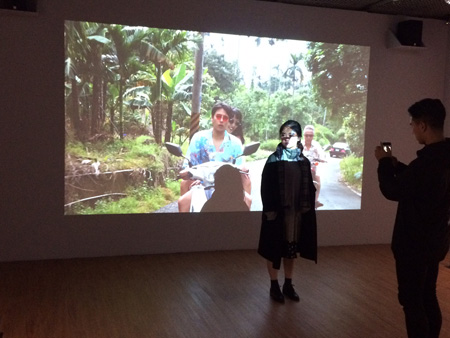
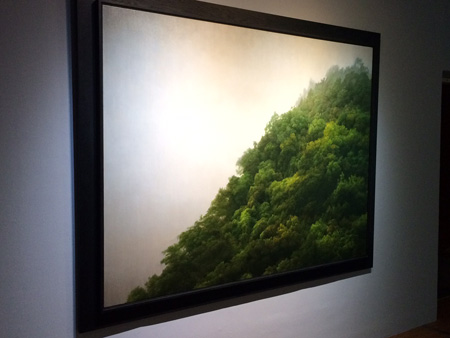


Photinia Formosana (vidéo, 10', password photina)
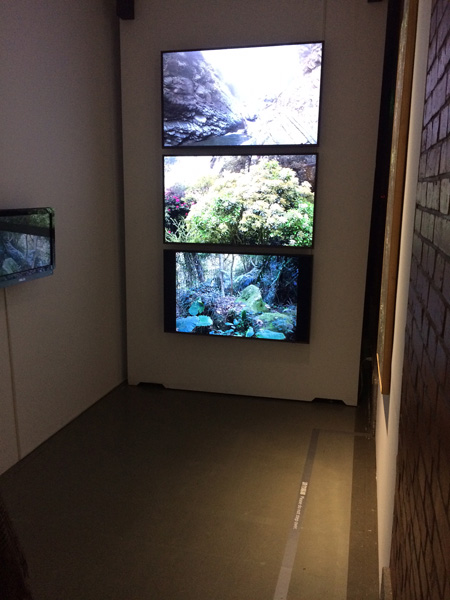
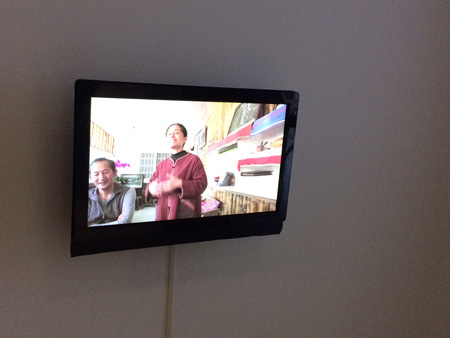
Contes d’arbres et de plantes (documentaire, 28')
